
When you eat a hot chili pepper, you might sweat, burn the roof of your mouth and shed a few tears. To some people, this is dining bliss. But how much is too much? Even those who love jalapenos can be habanero-shy. The latter are much hotter, and sure to cause more sweat and tears.
Jalapenos
This shiny dark green pepper tempers its heat with the sweetness of a bell pepper. The hottest parts are the seeds and ribs, so you can remove these if you want a milder pepper. Jalapenos vary in heat depending on where they were grown. Hotter weather produces more capsaicin, the chemical that gives the pepper its kick. Traditionally, jalapenos were mostly grown in the high deserts of Mexico, Arizona and New Mexico. But modern producers have found that jalapenos grown in cooler climates are prettier and easier to ship. However, these peppers are not as hot.
Habaneros
Habaneros are the hottest pepper you’ll likely find in an ordinary U.S. supermarket. Like jalapenos, the heat is concentrated in the seeds of these orange or yellow lantern-shaped peppers. You might want to wear gloves while chopping habaneros. Whatever you do, don’t rub your eyes. Cookbook author and pepper enthusiast Michael Hultquist likens habaneros to the seductive, motorcycle-riding bad boy of the pepper world.
Heat in Chilis
Chili peppers have different flavors and amounts of heat because of their differing combinations of 22 known capsaicinoids. The two major ones, dihydrocapsaicin and capsaicin, are usually the most concentrated. The ratio of capsaicinoids in a pepper is a combination of nature and nurture: the plant’s genetics and the environment in which it grows. Plant breeders manipulate these factors to design peppers with the desired amount of heat. When plants undergo stress, their hotness increases. Jalapenos and habaneros, like other types of peppers, are thus manipulated. Hotter jalapeno varieties include Mitla and Biker Billy. Tam and Delicas are two milder versions.
Heat Scales
People have devised various ways to measure a chili’s heat. A taste test is simplest, but too subjective to be of scientific use. In 1912, Wilbur Scoville developed the Scoville Organoleptic Test. Human subjects tasted samples of chili. Scoville diluted the samples until participants could no longer sense any heat. One unit of dilution was deemed a Scoville heat unit. On this scale, police-grade pepper spray weighs in at 5,300,000 Scoville units. A habanero pepper rates 100,00-350,000, depending on the pepper, and a jalapeno ranges between 2,500 and 5,000. In this system, a habanero would be at least 40 times hotter than a jalapeno. Another test, High-Performance Liquid Chromatography, is more objective but also much more expensive.
Related Articles

Can I Eat the Seeds of a Habanero ...

Does Fire Roasting a Jalapeno Make It ...

What Is Chipotle Seasoning?
Solutions for Too Much Heat in a ...
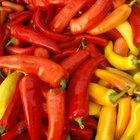
What Peppers Have Capsaicin?
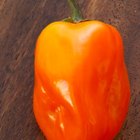
How to Grind Habanero Peppers
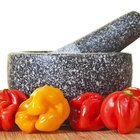
Substitutes for Scotch Bonnet

How to Infuse Vodka With Jalapenos
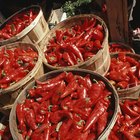
Health Benefits of Hot Peppers

Most Flavorful Hot Peppers

Does Cooking a Habanero Pepper Make It ...

How to Roast & Freeze Habanero and ...
Homemade Chili Recipe From Scratch
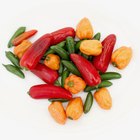
Hot Pepper Oil & Skin Burn

How to Cook Habaneros
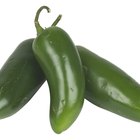
Facts About the Jalapeno Pepper
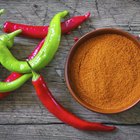
Ancho Chili Powder Vs. Chili Powder

Substitute for Thai Chili

The Best Pepper Plants for Salsa

Nutrition Facts for Cooked Poblano ...
References
Writer Bio
Teresa Bergen writes about fitness, health, yoga, travel and the arts. She is the author of "Vegetarian Asia Travel Guide" and has written hundreds of articles for publications online and off. Bergen also teaches yoga, spinning and group fitness classes, and is an ACE-certified personal trainer.
Photo Credits
Jupiterimages/Photos.com/Getty Images